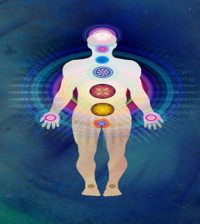- 5 Tips To Finding Peace Within Yourself
- The Do’s and Don’ts of Learning How to Accept Yourself
- How to Find Your Inner Peace and Transform Your Life
- 8 Benefits of Having an Open Mind and How to Get One
- Learn How To Be A Happier Person
- What Is The Meaning Of Life?
- Laws of Abundance – The Riches of Love and Joy
- How to Be Laid Back By Following These 9 Simple Strategies
- The meaning of confucius’ golden rule – 4 practical ways of living it
- 3 methods of unleashing the power of contentment in your life
The Causes Of Agoraphobia Explained

You may be surprised to know that there are an estimated 68.7 million sufferers of agoraphobia worldwide and 3.2 million of these are located in the US. Most people consider agoraphobia to be a fear of open and outside spaces, however it is more a fear of being in a space (confined or open) where the sufferer is anxious about being trapped and not being able to escape easily. Long queues at the bank, subway trains and movie theaters are all problem places for people suffering from agoraphobia. The actual causes of agoraphobia are not that clear cut since for some sufferers, other disorders also come into play.
In essence, there are two types of agoraphobia sufferers. Those with panic disorder (PD) and those without. Those with PD agoraphobia fear having a full blown anxiety attack, whereas those without PD are typically afraid of feeling dizzy or fainting in a crowded public place, and of feeling humiliated or embarrassed with nowhere to hide or escape. The main difference is that those without PD can normally confront situations when they are with someone else, whereas panic disorder agoraphobics, fear the anxiety attack itself. This is irrespective of who is with them. As a result PD agoraphobics are by far the more reclusive, often not venturing outside of their own homes. This alone can be extremely debilitating for those with the disorder. So with this in mind, what actually causes agoraphobia?
Genetics
Although for many years agoraphobia was thought to be genetic, it wasn’t until 2002 when a break though occurred. A comparison was made between chromosomes which identified one as a carrying gene for PD agoraphobic tendencies. This meant that anyone who had this characteristic gene were far more probable to develop the disorder.
Temperament
In addition to genetics an in born temperament may also play a big part in agoraphobic disorders. In other words a person’s natural disposition may become a deciding factor in whether they develop mood disorders in later life.
Illness and Psychological reactions
Studies have also shown that children who have suffered some kind of respiratory disease would make them susceptible to similar problems in later life. Therefore the worry of not being able to breath properly can manifest itself into a panic disorder, where symptoms are often exaggerated.
Events in earlier life
Statistics carried out on agoraphobia sufferers correlated that 42% of those surveyed had suffered separation from their parents or carers in early life, causing an unresolved separation anxiety in later life. Some eminent psychologists believe that this can manifest itself in the form of a panic disorder such as agoraphobia.
Learned behavior
Other theorists believe that human learning plays a big part as one of the main causes of agoraphobia. For example, a person may experience being in a crowded space such as a subway train and feeling an anxiety attack. As a result of this trauma the person then displays association behavior and connects this experience with all subway trains. Avoidance then strengthens this theory because the individual doesn’t allow themselves the opportunity to see whether the experience is indeed true.
Treatments
In most cases treatments consist of a mixture of Cognitive Behavioral Therapy (CBT) and medication such as Selective Serotonin Uptake Inhibitors(SSRI’s), Benzodiazepines, MAO inhibitors and Tricyclic Antidepressants (TCA’s). However alternative therapies are also now coming into play such as dietary control. Certain foods such as caffeine are known to accelerate panic disorders, and new research into gluten is also taking place. In addition some dairy products such as cheese have been known to bring about an attack.
Finally meditation is another alternative therapy that’s being explored. It’s known that even light meditation such as sitting quietly and breathing in and out deeply can boost changes in the chemicals in the brain. One such chemical is the mood stabilizer is known as GABA. Anxiety and PD’s are believed to occur in part because of a failure to produce insufficient levels of GABA in the brain. In other words people who don’t develop enough of this chemical naturally are known to be at higher risk from mood disorders.
As you can see, Agoraphobia like all mood disorders are pretty complex issues and the causes of agoraphobia could be down to a wide variety of circumstances. Even now, there is little known about the disorder. However there is light at the end of the tunnel because with proper professional treatment around 90% of people can at least resume a normal life, if not make a full recovery.










































You must be logged in to post a comment Login